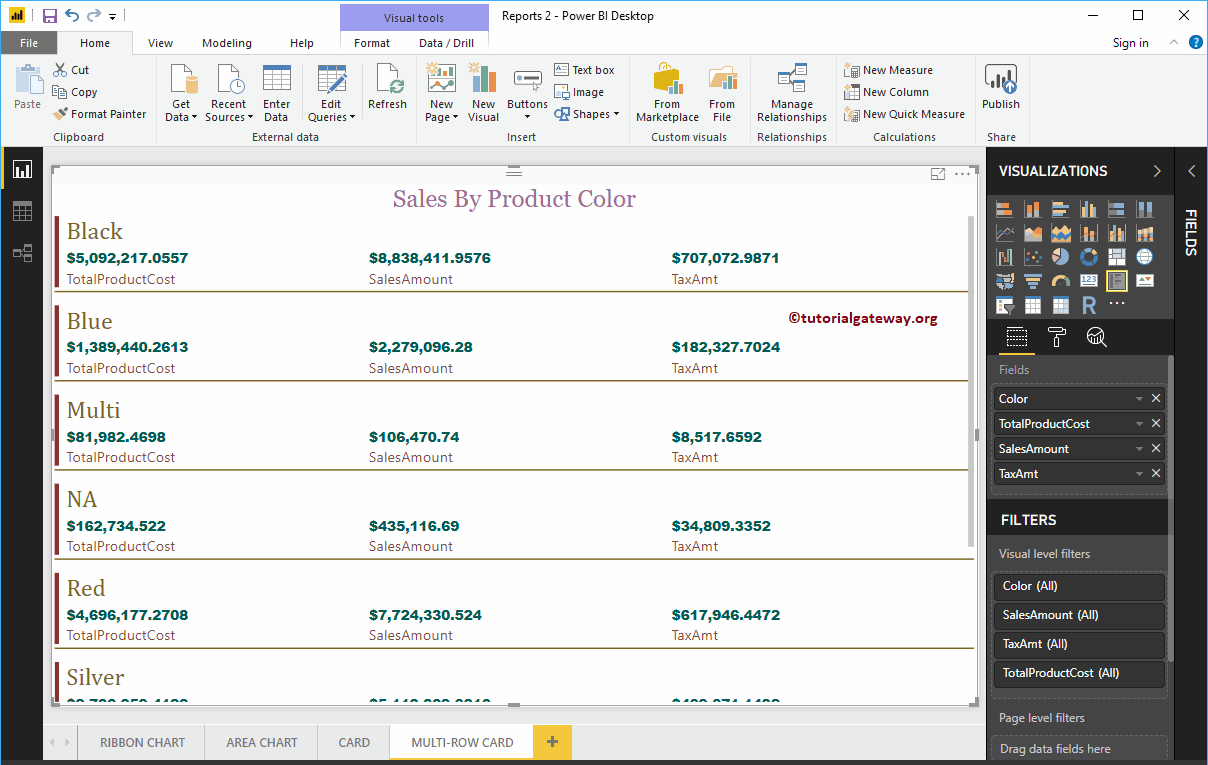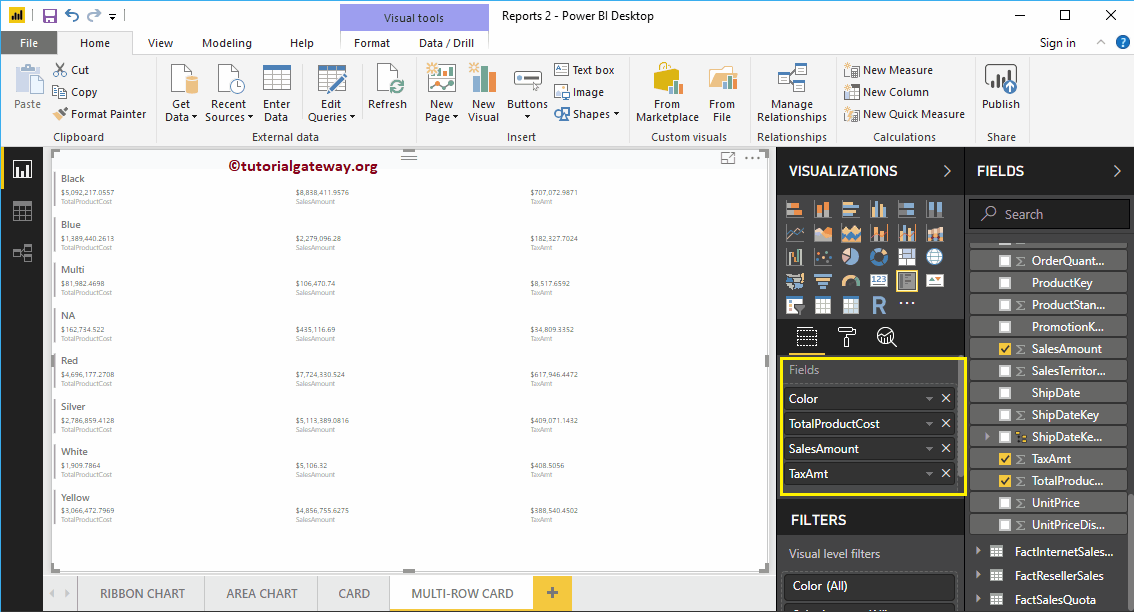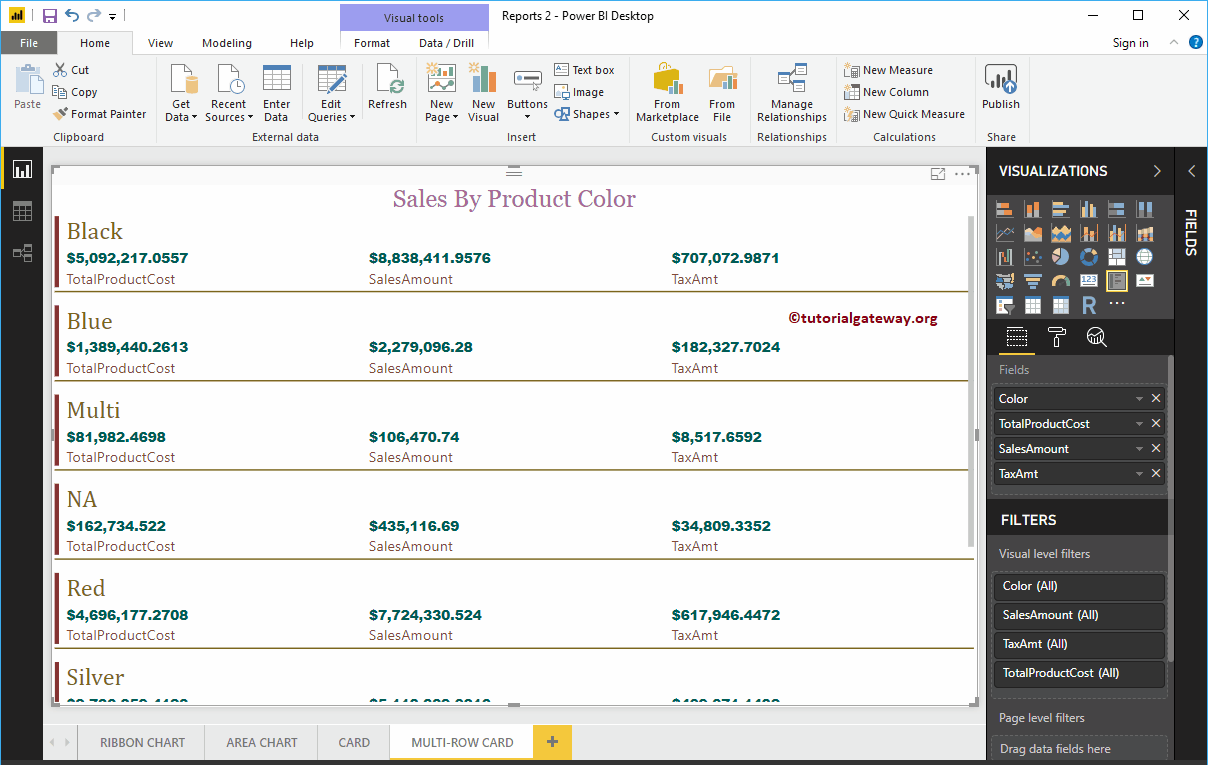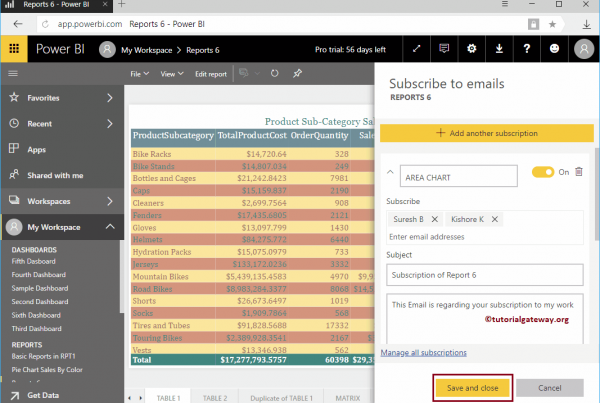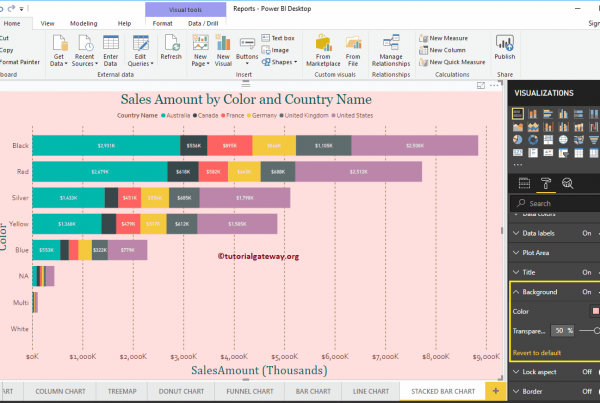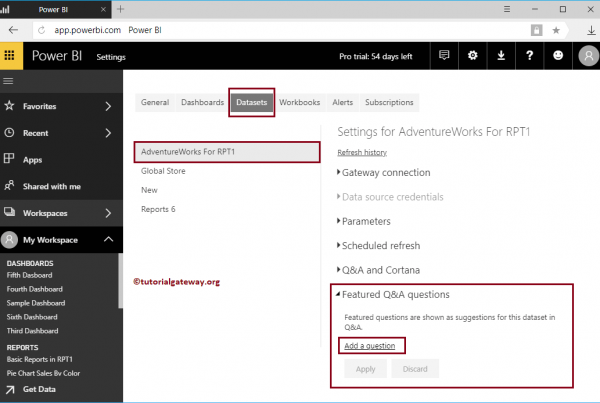The Power BI multi-row card is useful for displaying your data in a group format (or in a section). Let me show you how to create a multi-row card in Power BI with an example.
For this demonstration of the Power BI multi-row card, we will use the SQL data source that we created in our previous article. So, see the article Connect Power BI to SQL Server to understand the data source in Power BI.
How to create a multi-row card in Power BI
Drag and drop the sales amount from the Fields section onto the canvas to automatically create a column chart, as shown in the screenshot below.
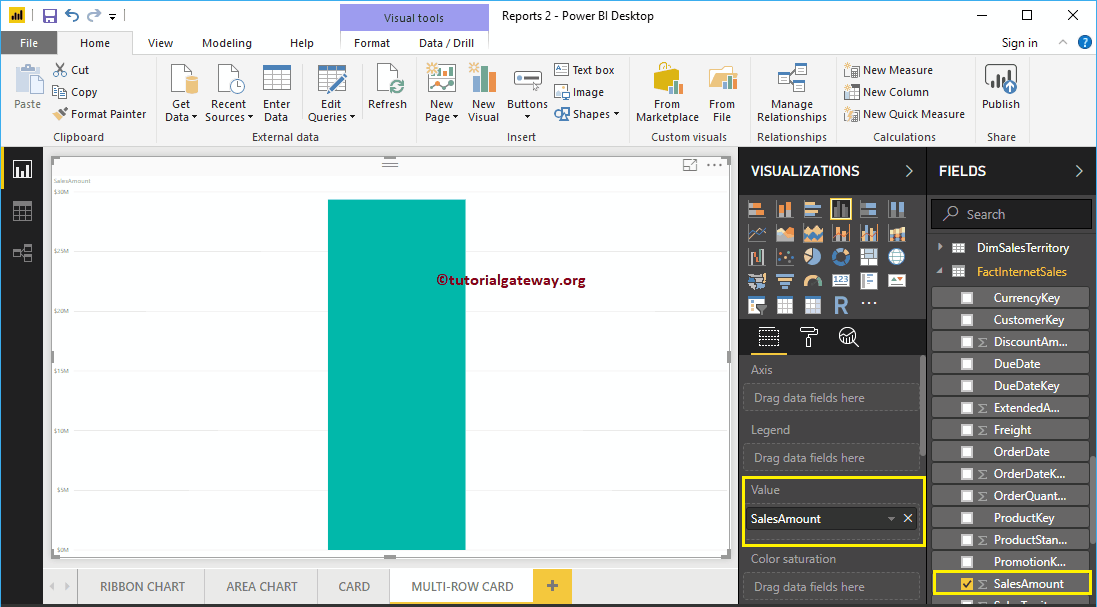
Next, let me add the Color field to the Axis field. Create a column chart that shows the amount of sales by product color.
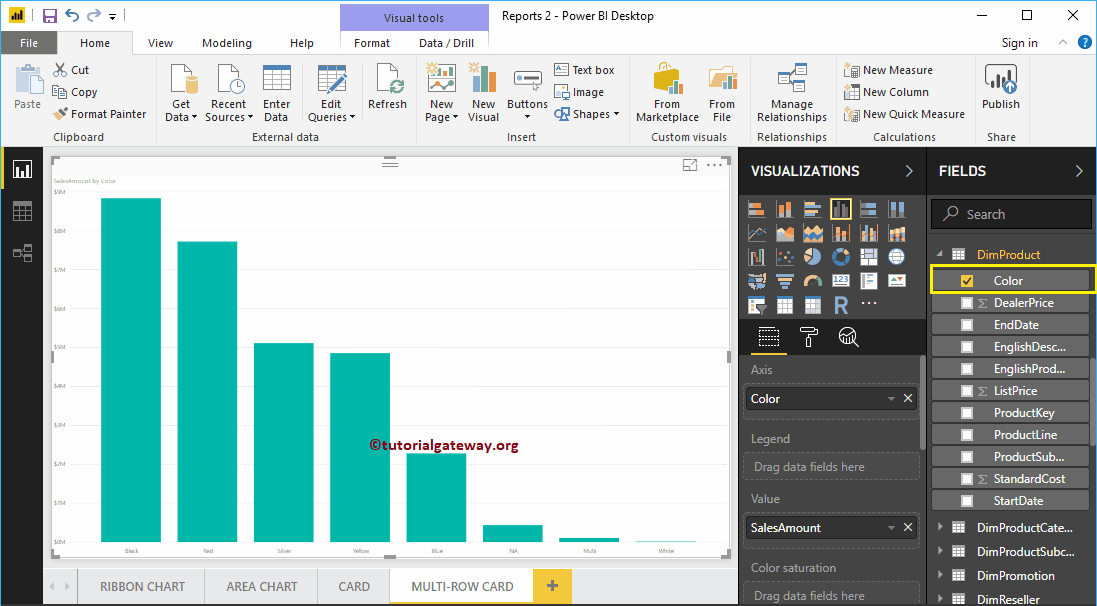
Click on the multi-row card below Display section. Automatically converts the column chart to a multi-row card. In the screenshot below, you can see the Multi-Row Card showing the total sales amount grouped by product color.
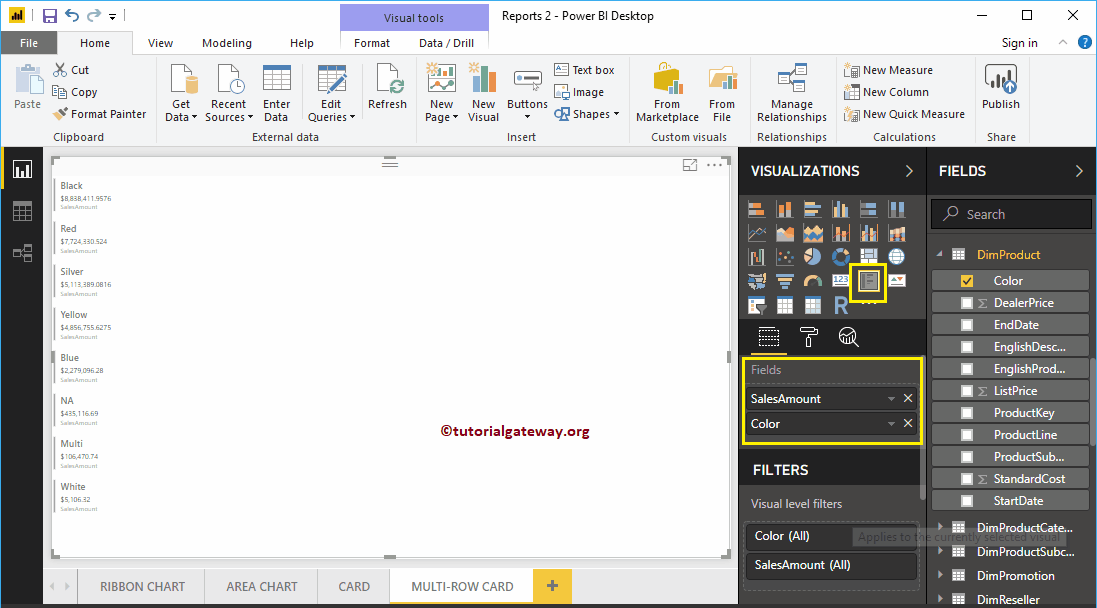
Create a multi-row card in Power BI approach 2
First, click on the Multi-Row Card under Display section. Create a multi-row card with dummy data, as shown in the following screenshot.
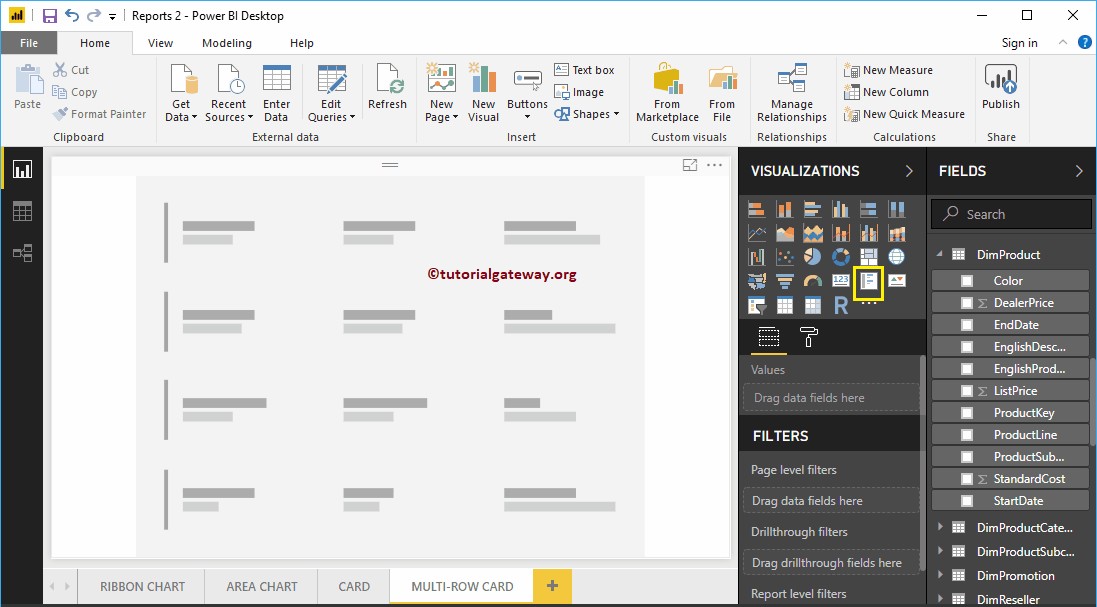
Let me drag the Product Color and Sales Amount section to Fields. As you can see, it shows the multi-row card of product color and sales quantity.
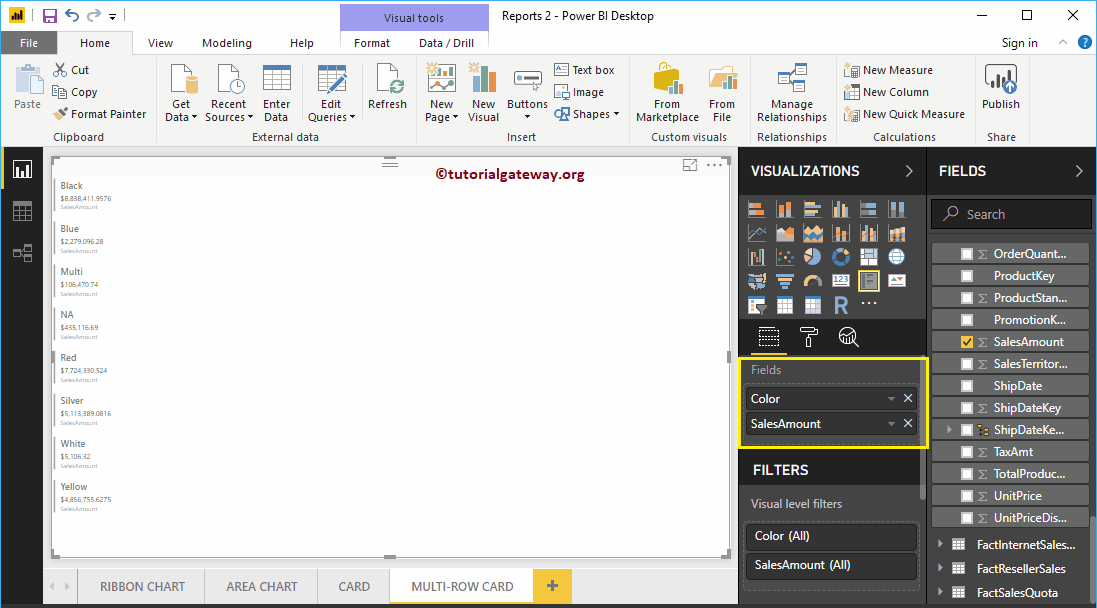
Next, let me drag one more metric value, that is, the total cost of the product, to the Fields section.
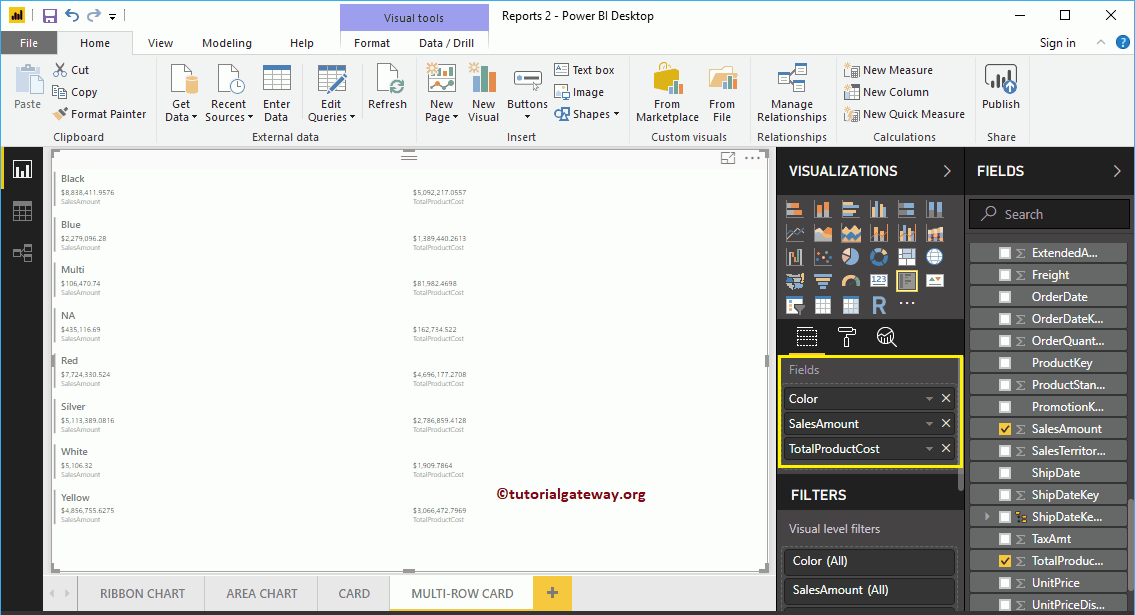
Let me drag the Tax Amount as well.
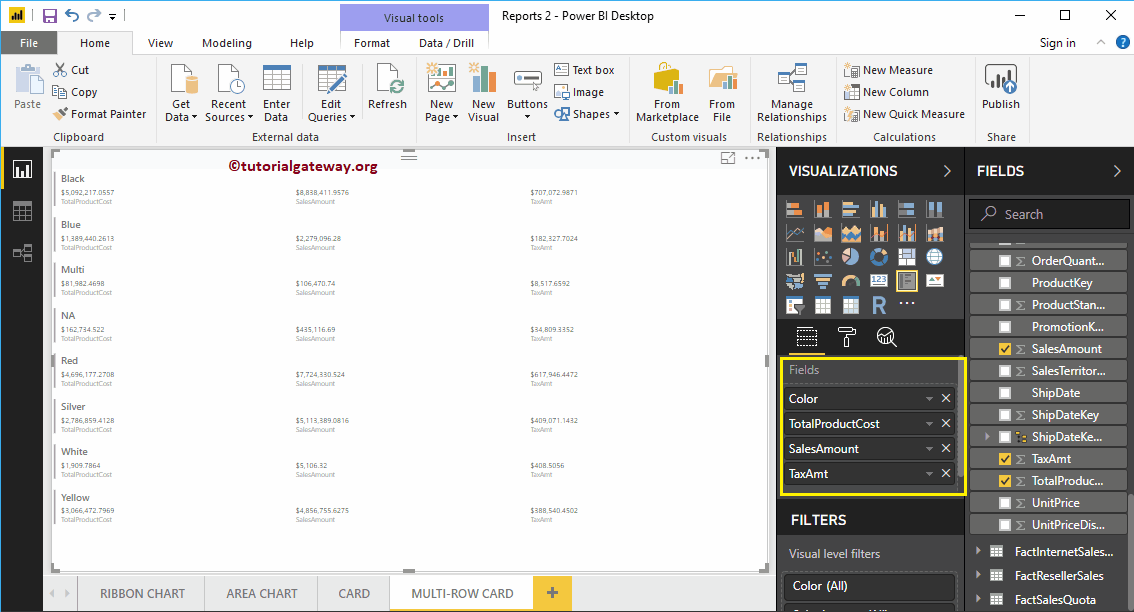
Let me quick format this multi-row card
NOTE: I suggest you refer to the Format Multi Row Card article to understand the formatting options.
